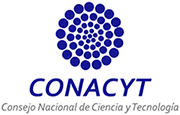The importance of geometric drawing in the urban projects of spanish architect Román Jiménez Iranzo
DOI:
https://doi.org/10.20983/decumanus.2024.1.2Keywords:
architectural drawing, geometry, fractal, urban projects, symbolismAbstract
This article aims to show the relevant and close relationship between drawing and the creation of public space in the work of the Valencian architect Román Jiménez Iranzo, a professional of great relevance in the construction of modern Valencia, a city in which he executed a large part of his prolific work, which ranges from residential construction to intervention in streets and squares in the city, fundamentally after being appointed Head of the Urban Projects Service of the City Council. It was precisely during this municipal period (1991-2005) when, together with his colleague, the architect Pedro Soler, he showed his mastery of both Euclidean and fractal geometry, displaying in his urban projects a wide palette of compositions dominated by the isosceles right triangle and derived from his hitherto unknown plastic work. These interventions, always with a strong historicist influence and loaded with symbolism, allowed him to explore solutions endowed with personality that subtly conceal messages that at first sight are imperceptible, requiring the spectator to have a cultured and calm gaze to reveal and appreciate them in their entirety. A gaze that Román Jiménez himself transmitted to his students during his long teaching period as director and professor of drawing in the subject of Analysis of Architectural Forms at the Valencia School of Architecture, in the recovery of which he played a fundamental role. The present work is the result of a thesis in the making, which investigates and explores in depth his plastic work concerning his architectural and urban work.
Downloads
References
Albalat, L. (2005). In memoriam. José Mora y Ortiz de Taranco. Arquitecto y Académico de Número. Archivo de Arte Valenciano 2005, pp. 277-278.
Bosch, I. (2007). Cuarenta Aniversario de la ETSAV: una visión transversal. En Cuarenta Aniversario de la Escuela Técnica Superior de Arquitectura de Valencia ETSAV. curso 1966/67-2006/07 (pp. 11-17). General de Ediciones de Arquitectura.
Domínguez, J. (1992). El Puig de Santa María. Aproximación Histórica y Valoración Crítica. Publitrade.
Gardner, M. (1988). Los acertijos de Sam Loyd. Editorial Granica.
Jiménez, R. (1997). Los orígenes de la Escuela Técnica Superior de Arquitectura de Valencia. Archivo de arte valenciano nº 78, Real Academia de Bellas Artes de San Carlos, pp. 242-249.
Jiménez R. y Soler, P. (2000). Mercado de Colón. Informes de la Construcción, pp. 469-470.
Klibansy, R., Panofsky, E. y Saxl, F. (1991). Saturno y la melancolía. Editorial Alianza Forma.
Lozano, A. (Comisaria) (2005). Catálogo de la Exposición Román Jiménez Iranzo 1932-2005. UPV y ETSAV.
Lozano, A. (Comisario) ad alters (2023). Catálogo de la Exposición Román Jiménez Iranzo (1932-2005). CTAV.
Lozano, J. M. (2005). Román Jiménez Iranzo. Arquitecto Ilustre y Académico de Número. Archivo de Arte Valenciano 2005, pp. 327-329.
Mandelbrot, B. (1987). Los objetos fractales. Tusquets Editores.
Palacio, A. (1968). La alegría del capitán Ribot. Editorial Bruguera.
Peñín, A. y Taberner, F. (2022). Román Jiménez Iranzo en Arquitectos con huella. La arquitectura valenciana a través de sus protagonistas (1768-1971), p. 172. Real Academia de Bellas Artes de San Carlos, COACV, CTAA, CTAC, CTAV.
Downloads
Published
How to Cite
Issue
Section
License
Copyright (c) 2024 Decumanus

This work is licensed under a Creative Commons Attribution-NonCommercial-ShareAlike 4.0 International License.











